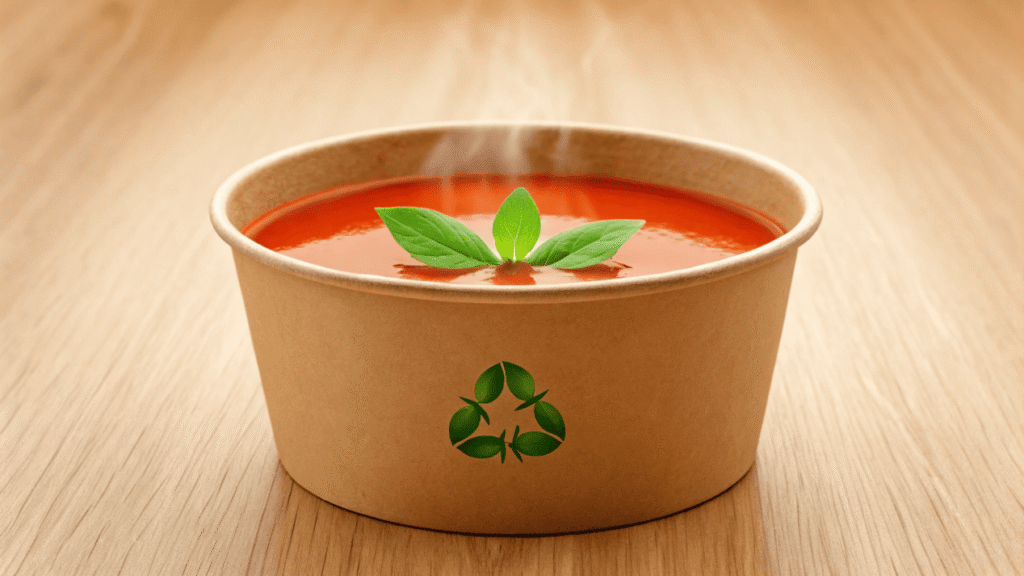You serve delicious, hot soup, but fear that a "green" bowl will get soggy and leak. This damages customer trust and your reputation before they even take the first bite.
Yes, a properly engineered compostable bowl is perfect for hot soup. It combines a heat-resistant, plant-based PLA coating with a heavy-duty, leak-proof paperboard structure to ensure performance and safety.
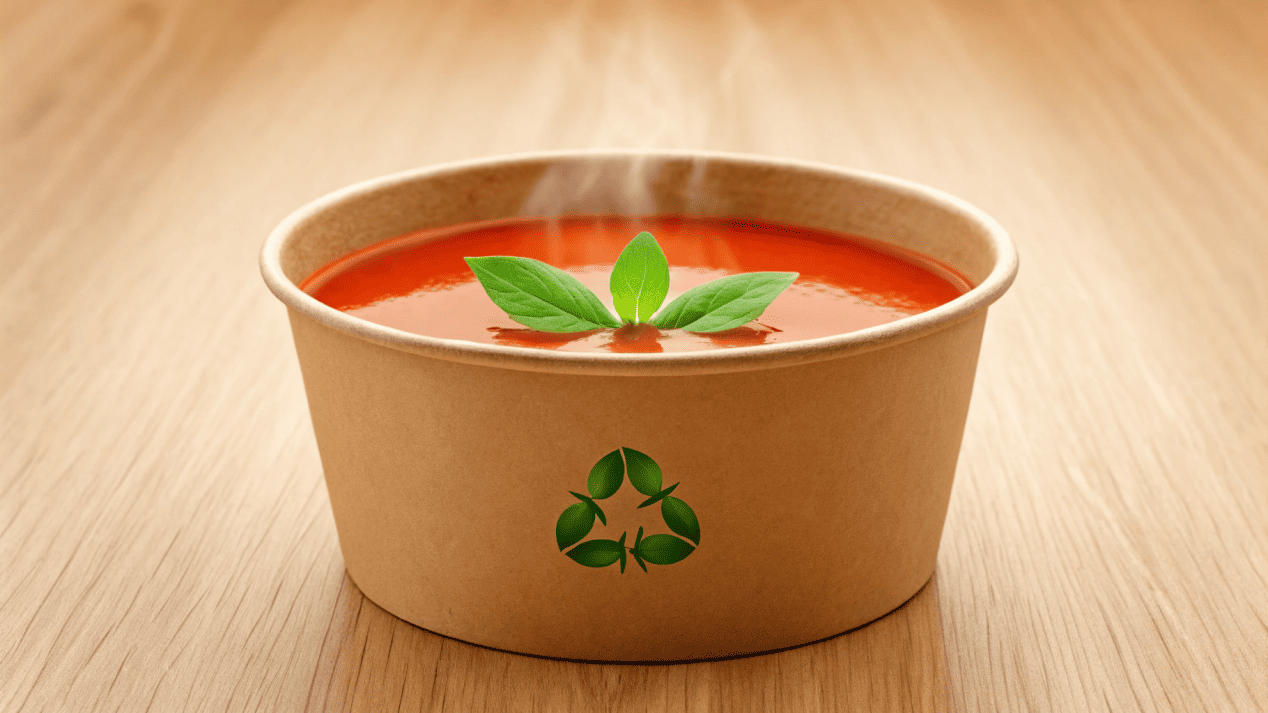
I remember talking to a chef who ran a popular ramen shop. He simmered his broth for over 12 hours and was incredibly proud of it. He told me, "Jonh, my biggest fear is a customer getting home and finding a bag full of broth instead of a bowl of ramen." He felt that "compostable" must mean "weak." I explained to him that it's all about the engineering. A great soup bowl isn't just made, it's designed. It works as a complete system to protect the food, the customer, and the brand's reputation. Let's break down that system.
How Does a Plant-Based Lining Stop Soup from Melting a Bowl?
You picture your simmering, oily soup turning a compostable bowl into a soggy mess. The fear of a catastrophic product failure undermines your confidence in making a sustainable choice.
Compostable bowls use a PLA (Polylactic Acid) lining. This bioplastic, made from corn starch, creates a robust, waterproof shield that easily stands up to heat and oil without buckling or impacting taste.
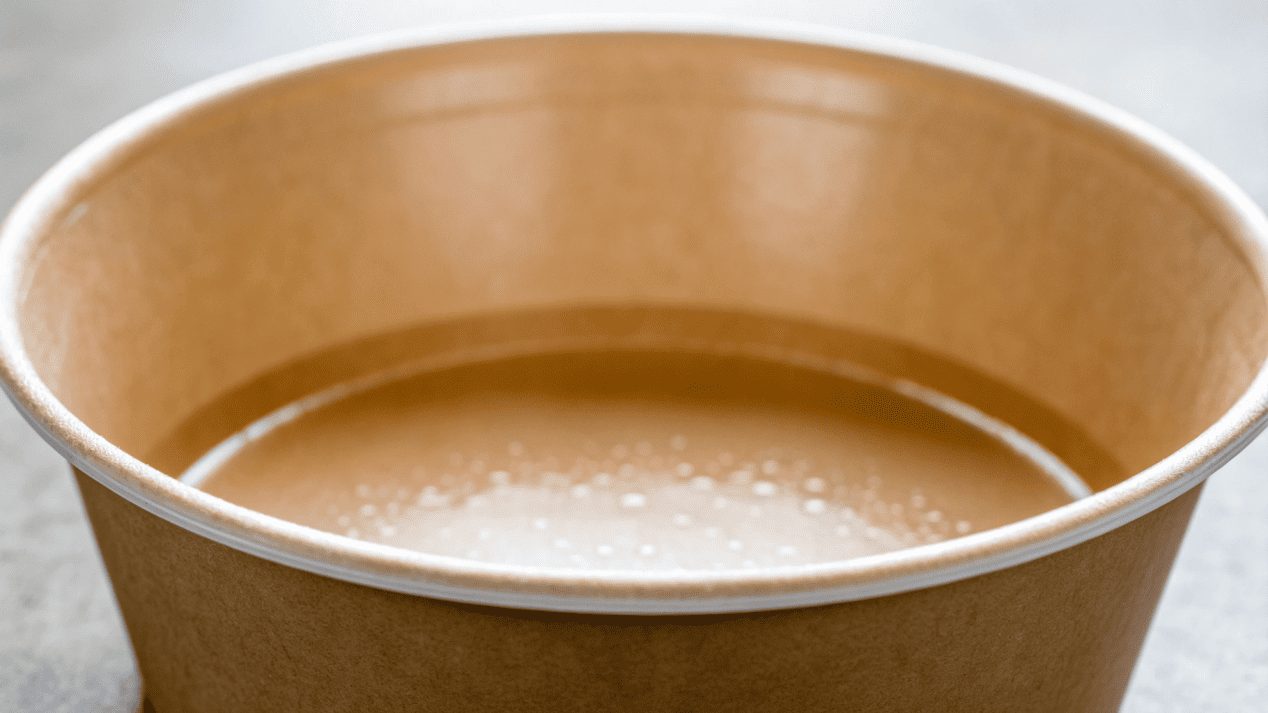
This is where the magic happens. Hot soup, especially if it's oily or acidic, is the ultimate enemy of paper. The secret to victory is the bowl's invisible shield: the PLA coating. PLA, or Polylactic Acid, is a bioplastic. Instead of being made from fossil fuels like traditional plastic, it's derived from renewable plant resources like corn starch. We apply this coating to the inside of the bowl, where it creates a durable, food-safe, and completely waterproof barrier. This isn't just a thin layer of protection; it's a robust shield engineered for high performance. It ensures the bowl's structure is never compromised.
Performance Under Pressure: PLA vs. No Coating
| Feature | Paper with PLA Coating | Uncoated Paper |
|---|---|---|
| Water Resistance | Excellent. Completely waterproof. | Poor. Becomes soggy quickly. |
| Heat Resistance | Excellent. Resists hot liquids and oils. | Poor. Loses structural integrity. |
| Food Safety | Excellent. BRC/FDA certified, no taste transfer. | Not safe. Fibers can leach into food. |
The PLA lining guarantees that the bowl won't get soft, leak, or impart any unwanted flavors into your carefully crafted recipes. It's the key to serving hot soup with complete confidence.
What Actually Stops a Paper Bowl from Leaking at the Seams?
A single drop of soup leaking from the bottom seam can ruin a customer's meal, their car, and their opinion of your brand. This fear of leaks makes you hesitant.
A truly leak-proof design comes from two things: superior materials and precision construction. We use heavy-duty SBS paperboard for rigidity and a securely sealed base to eliminate leaks at the seams.
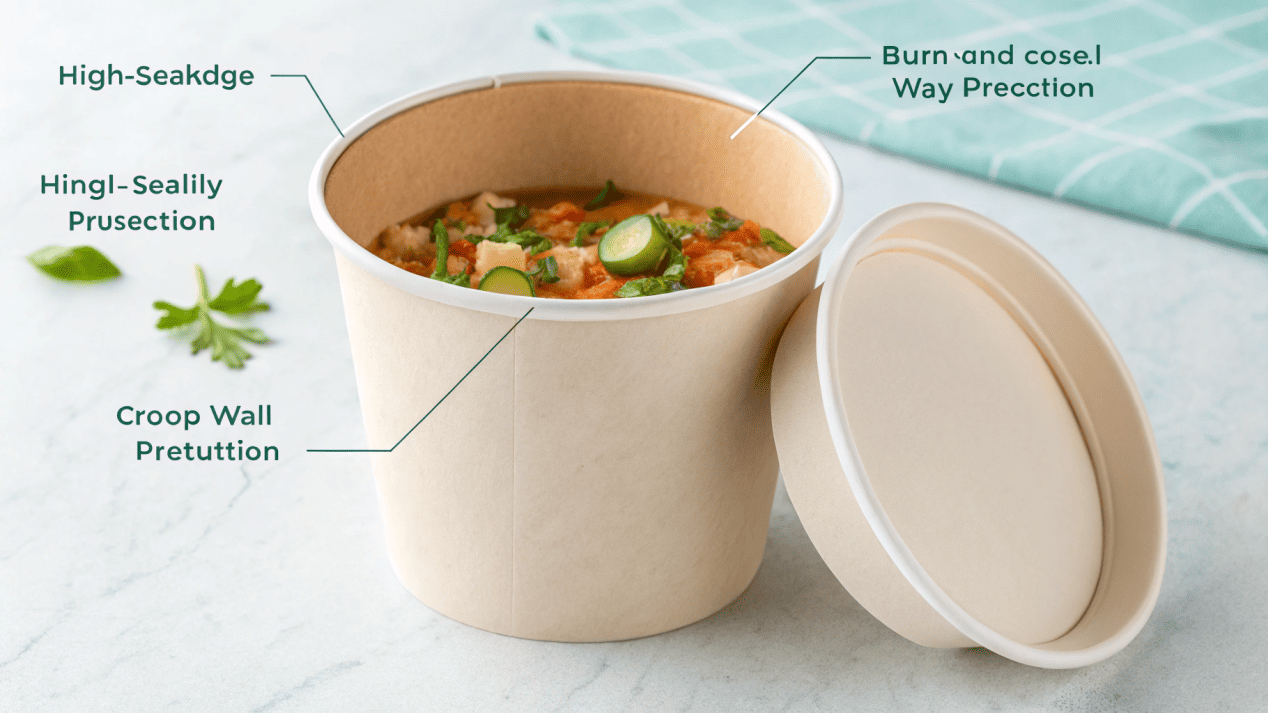
As an engineer, I can tell you that a container is only as strong as its weakest point. For paper bowls, the most vulnerable area has always been the bottom seam. This is where the side wall meets the base. A perfect lining is useless if the construction of the bowl itself is weak. That's why we focus on two critical engineering aspects. First, we use premium, heavy-duty SBS (Solid Bleached Sulfate) paperboard. This type of paper has long fibers, giving it superior strength and rigidity so it won't buckle under the weight of the soup.
Second, and most importantly, is our construction process. The base of the bowl is not simply glued on. It is formed and sealed using a combination of heat and pressure, creating a tight, secure bond that is virtually leak-proof. We also engineer our bowls with a tightly rolled rim. This not only makes it comfortable for the customer to hold but also ensures a secure fit with our vented lids, creating a complete, travel-safe system.
How Can a Simple Soup Bowl Become a Marketing Tool?
You see packaging as just a necessary expense for getting your food to the customer. This overlooks its potential as a powerful marketing tool that your customer holds in their hands.
With high-resolution printing, your bowl becomes a mobile billboard for your brand. More importantly, choosing a compostable bowl tells a powerful story about your commitment to quality and the environment.
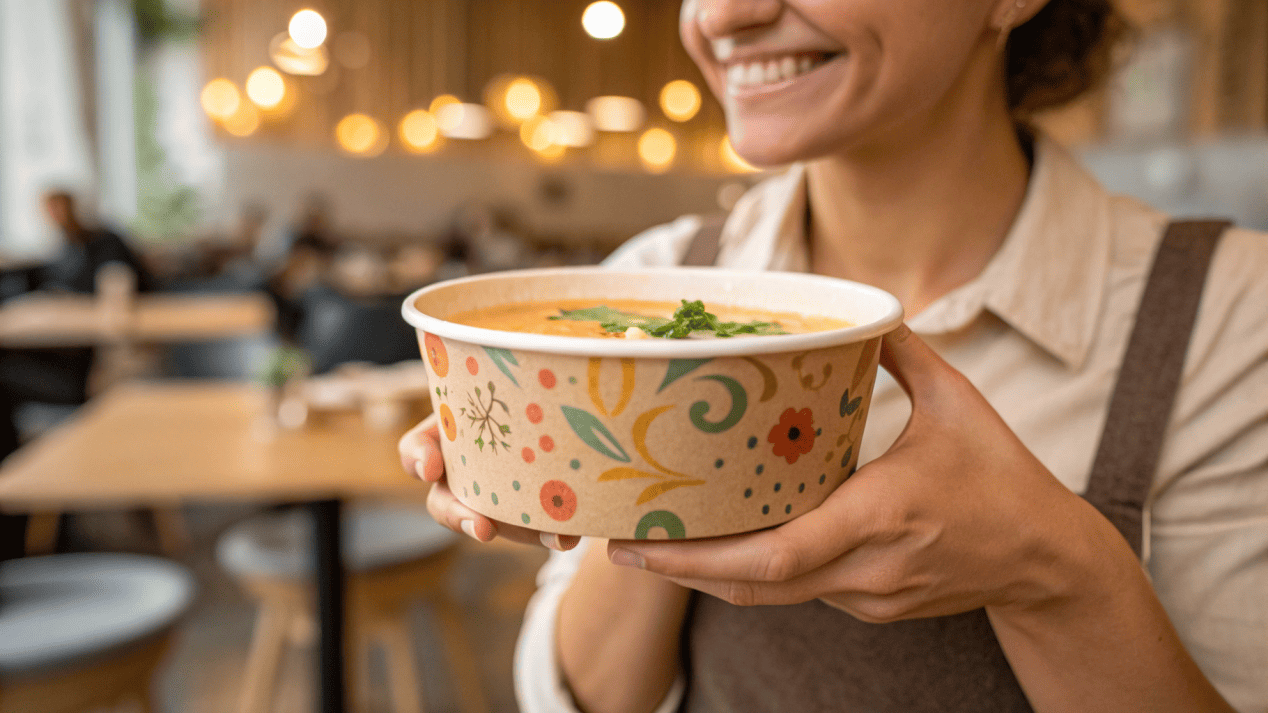
Your soup bowl is often the very first physical interaction a takeout customer has with your brand. Why would you let that be a blank, generic container? With our advanced printing capabilities, that bowl becomes a vibrant canvas for your story. We can print your logo, brand colors, and unique designs with high resolution, making your brand instantly recognizable and memorable. But the marketing power goes even deeper than the logo.
The Messages Your Bowl Sends
| Action | What the Customer Sees & Feels |
|---|---|
| Using a Sturdy, Quality Bowl | "This brand doesn't cut corners. They care about quality." |
| Using a Custom-Branded Bowl | "This is a professional, established brand that I can trust." |
| Using a Compostable Bowl | "This brand shares my values. They care about the planet." |
The simple fact that you chose a compostable bowl tells a story all on its own. It says that you are thoughtful, that you invest in a better customer experience, and that you are committed to sustainability. This message resonates very strongly with today's consumers and builds the kind of brand loyalty that goes far beyond just the food you serve.
What Does "Compostable" Actually Mean for Your Bowl?
You see the "compostable" label but worry it might be empty marketing. You don't want to invest in a green solution that still ends up in a landfill, deceiving your customers.
Compostable means that in a commercial composting facility, the entire bowl—both the paper fiber and the PLA lining—will break down into non-toxic organic matter, returning to the earth to enrich the soil.
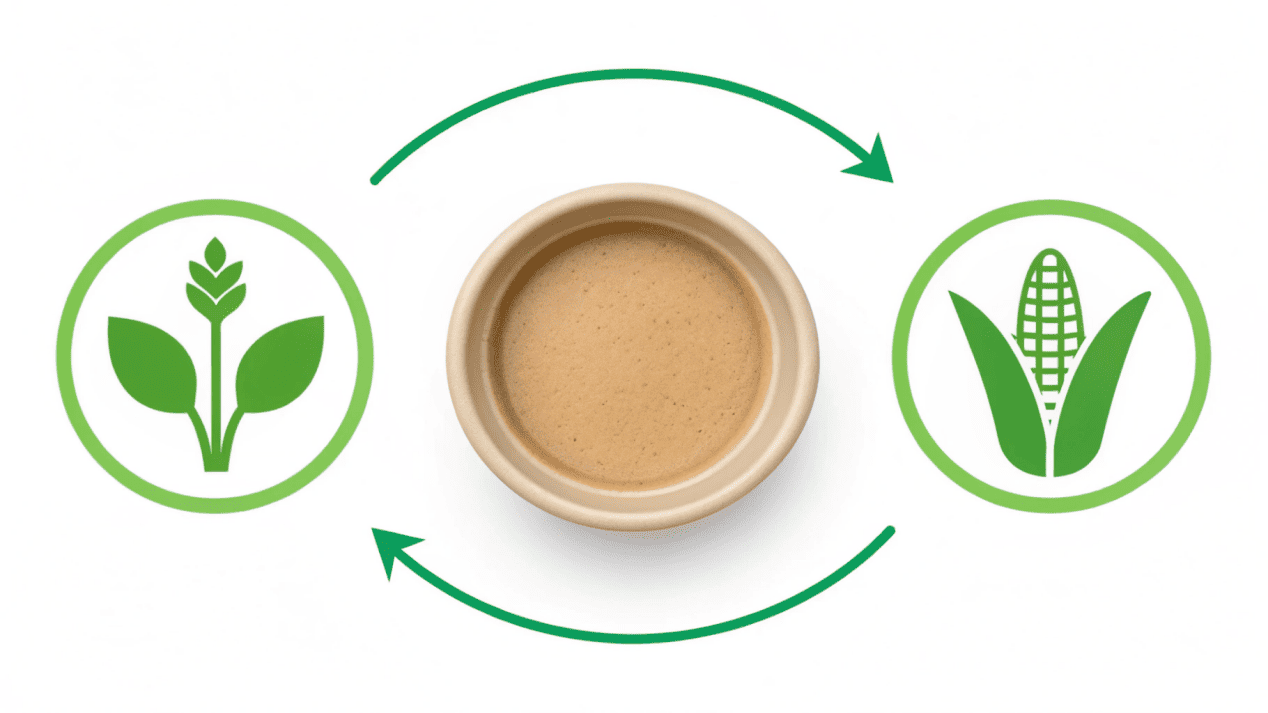
This is a very important question, and it's essential to be honest about it. "Compostable" is a specific scientific term. It means that an item can break down into natural elements in a compost environment. For our PLA-lined bowls, this requires the specific conditions found in a commercial or industrial composting facility, where high temperatures can break down both the paper and the PLA lining efficiently. These facilities are becoming more common as cities expand their green waste programs.
The alternative is a traditional plastic-lined bowl. This product can never be recycled or composted. It is destined for one place: the landfill. There, it will sit for hundreds of years. By choosing a compostable bowl and helping to educate your customers on proper disposal, you are choosing to be part of a circular system. You are taking something that would be "waste" and turning it into a valuable resource that can be used to enrich the soil. It's one of the most tangible ways to show your commitment to a sustainable future.
Conclusion
A great compostable soup bowl protects your food, builds your brand, and honors your commitment to the planet. It's more than packaging; it's a promise of quality and care.
